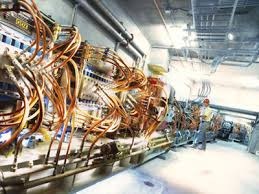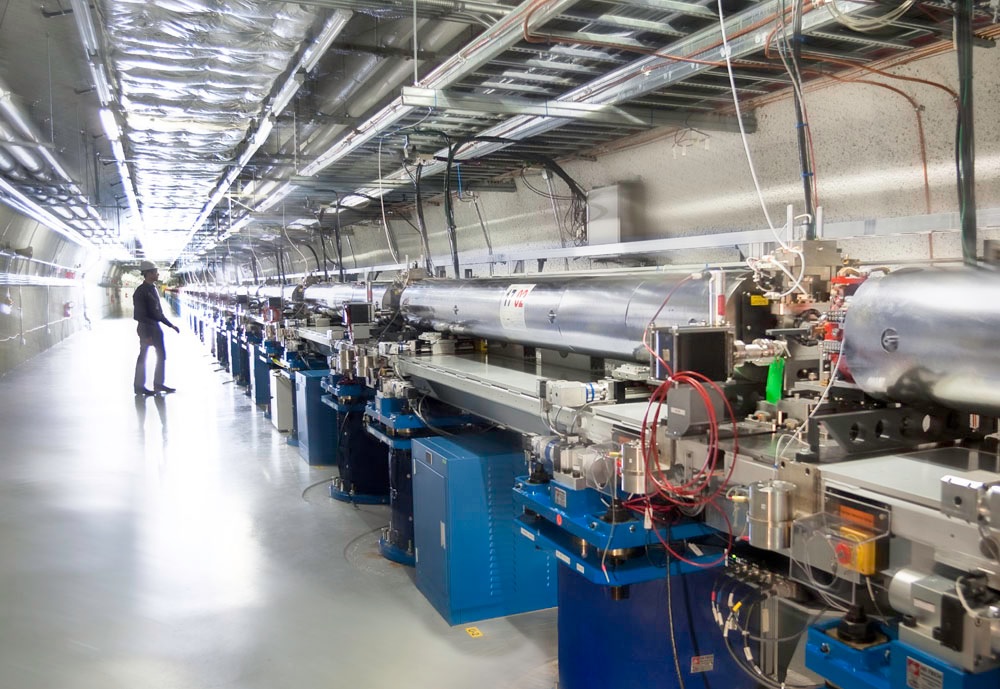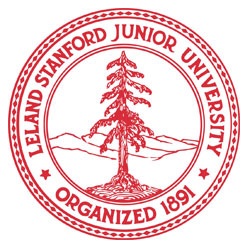March 24, 2016 [Stanford just put this in social media 12.14.16.]
Glennda Chui
When molecules won’t crystallize and technology confounds, who you gonna call?

Macromolecular Structure Knowledge Center at Stanford’s Shriram Center. From left: Ted Li, T.J. Lane, MSKC Director Marc C. Deller, Nick Cox, Timothy Rhorer, Zachary Rosenthal.

Researcher Ted Li examines a sample tray full of protein crystals under a microscope. Photo: SLAC National Accelerator Laboratory.
Biology isn’t just for biologists anymore. That’s nowhere more apparent than in the newly furnished lab in room 097 of the Shriram Center basement, where flasks of bacterial and animal cells, snug in their incubators, are churning out proteins destined for jobs they may not have done in nature.
Researchers who use this lab span a broad range of backgrounds and interests: Chemists searching for novel antibiotics. Chemical engineers developing biofuels. Doctors seeking new treatments for diabetes.
Most of these highly skilled researchers have one thing in common: They have no idea how to grow the proteins and other large biomolecules that are essential to their research or how to prepare those proteins for X-ray studies that will reveal their structure and function.
That’s where Marc Deller comes in.
“I’m the lab manager, scientist, lab cleaner — I do everything, and I help people who don’t know how to use the equipment,” says Deller, who arrived in August to establish and direct the Macromolecular Structure Knowledge Center (MSKC). “I’m pretty much unboxing things every day and trying to get things plugged in.”
With a doctorate from Oxford and years of protein-wrangling experience, he’s here to help Stanford faculty and students grow, purify and crystallize proteins and other big biomolecules so they can be probed with the SSRL synchrotron or the LCLS X-ray laser at SLAC National Accelerator Laboratory, just up the hill.
SLAC jointly funds the center with Stanford ChEM-H, an interdisciplinary institute aimed at understanding human biology at a chemical level, and the services offered at MSKC augment help available from the expert staff at the SLAC X-ray facilities.
X-ray crystallography has been a revolutionary tool for understanding how living things work, revealing the structures of more than 100,000 proteins, nucleic acids and their complexes over the past few decades and fueling the development of numerous life-saving medications.
But it’s not always easy, as chemistry graduate student Ted Li can attest. The protein he’s studying — a natural catalyst found in soil bacteria that scientists hope to turn into an antibiotic factory — “is very resistant to crystallization. It’s very floppy and doesn’t want to pack,” says Li, who works in the lab of Chaitan Khosla, professor of chemistry and of chemical engineering. “So I need to find a way to force them to do that. Most of the things I’m doing these days are completely new to me, and Marc is my main mentor. He’ll actually go with me to SLAC and guide me in how to collect my data.”
In its first six months, MSKC has already helped scientists with two dozen research projects, and Deller is eager to round up more. “From my experience of doing this for 20 years,” he says, “making the protein is definitely a bottleneck.”
See the full article here .
Please help promote STEM in your local schools.
![]()
Leland and Jane Stanford founded the University to “promote the public welfare by exercising an influence on behalf of humanity and civilization.” Stanford opened its doors in 1891, and more than a century later, it remains dedicated to finding solutions to the great challenges of the day and to preparing our students for leadership in today’s complex world. Stanford, is an American private research university located in Stanford, California on an 8,180-acre (3,310 ha) campus near Palo Alto. Since 1952, more than 54 Stanford faculty, staff, and alumni have won the Nobel Prize, including 19 current faculty members




